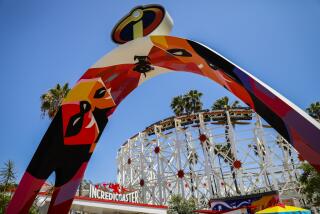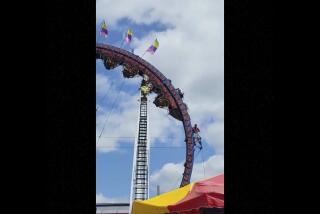May Centrifugal Force Be With You
- Share via
At last. Summer’s here and the time is right . . . for standing in long amusement park lines for a chance to defy gravity--and reason--on a roller-coaster ride.
And while you’re whiling away the minutes (if not hours) till you get your chance at mobile thrill-seeking, you might ponder this: How does a roller coaster stay on track when it goes upside down?
Wonder no more. Here’s an explanation courtesy of the folks at 3-2-1 Contact magazine:
Roller coasters are locked onto the track rails by their wheels. One set of coaster wheels fits inside the rails; the other wheels ride above and below the rails.
Computers also control the brakes so the cars don’t get too close to each other. Plus, passengers are locked in with safety bars and heavy seat belts. That’s why nobody flies off into space.
Roller coasters that zoom upside down also use a natural force--centrifugal (pronounced sen-TRIF-uh-gul) force--to keep from falling. Centrifugal force pushes objects outward when they go around a curve.
You can see this force in action by filling a small bucket with water and whirling it over your head. The water stays in the bucket because of centrifugal force.
More to Read
Sign up for The Wild
We’ll help you find the best places to hike, bike and run, as well as the perfect silent spots for meditation and yoga.
You may occasionally receive promotional content from the Los Angeles Times.






